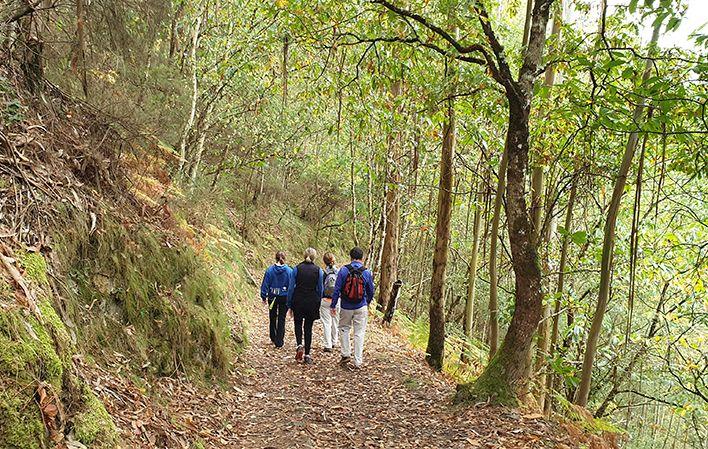
Hoces del Esva Route
- Address Tineo and Valdés Western Asturias
- Distance Distance: 6,4 kms
- Difficulty Difficulty: Half
- Code Code: PR1 and PR2
- Altitude Altitude: 535 m.
- Unevenness Unevenness: 665 m.
-
On foot
On foot:
2 h.
.
- Start point Start point: Caeras (Tineo)
- Route type Route type: hiking
- Tour type Tour type: Round trip
- Layout of the route Layout of the route: Download kml, Download gpx
Info
Considered by some experts as the best riverside forest in the whole Iberian Peninsula, the Esva River is undoubtedly a wonderful place to enjoy this type of nature and waters with a great environmental quality, as shown by the presence of otters and dippers.
In the river bed, the vegetation is everywhere: the royal ferns can be seen in large swathes, the alders leave almost no bald patches and the coolness of the forest and the river come together to make this stretch a highly recommendable route during the rigours of summer.
In the upper area, among chestnut trees, rowan trees and heaths, we also discover that this was once a land of bears, as indicated by the presence of cortines (circular stone structures to protect the bees from bears). This is undoubtedly one of the essential routes for getting to know this type of nature in Spain.
Route
Caeras (Tineo) - Bustieḷḷu (Valdés)
With a linear route divided into two well-differentiated sections, this route allows us to cross the spectacular Hoces del Esva between the village of Ese, in the parish of Caeras, and the village of Bustieḷḷu in the valley of Paredes (municipality of Valdés).
This route can be done the other way round, starting in Bustieḷḷu and ending in Caeras, but in this case we start in Caeras.
The starting point of the route is located on the road from Navelgas to Naraval, on the hill that separates the mountain ranges of Campo la Bobia, to the west, and Balbón, to the east. To reach this point you can use the signposted path of La Huella del Oro, which leaves the recreational area of Navelgas and reaches this hill through an area of thick forest where traces of Roman gold mining are preserved (approximately 1 km from Navelgas).
From the top, the route begins with a short climb and then continues along one of the numerous paths on the northern slopes of the Sierra de Balbón, overlooking the valley of Naraval.
This section ends at the eastern end of the mountain range where a forest track descends sharply to the bottom of the valley, where the village of Ese lies at a confluence of streams that gives rise to the river Esva.
The route continues to the outskirts of Ese along a forest track that turns off to the left of the Caeras road through a tunnel of chestnut, hazel and oak trees. After a sudden ascent, there is a rest area, which precedes a rapid descent to the banks of the river that plunges us right into the Esva Gorges.
In the next section, the route becomes a continuous up and down, overcoming the difficult orography that imprisons the riverbed by means of footbridges and wooden steps.
Leaving behind the dam of an old reservoir, the path eventually leaves the immediacy of the river to seek an exit from the gorge through a path carved into the rock and flanked by vertical cliffs.
Fixed ropes that act as handrails contribute to the safety of this path before reaching El Cabanón, where there are great views and vestiges of installations associated with a hydroelectric power station.
From there, a forest track leads comfortably to Bustieḷḷu, the final destination of the route.
At El Cabanón there is an open path to the right through the undergrowth that leads to the Adráu cowherd's hut, which forms part of a signposted alternative that leads to the village of Paredes. To reach the hut you have to overcome a steep slope of some 370 m and then descend towards San Pedru (Paredes) along a ridge with great views over the Esva Gorges.



